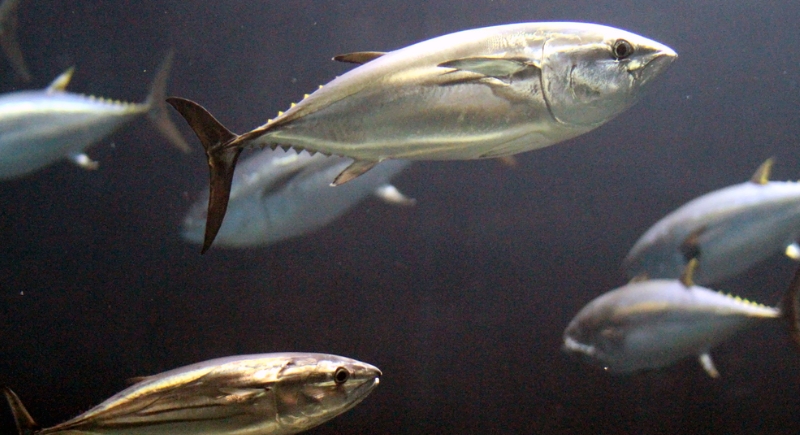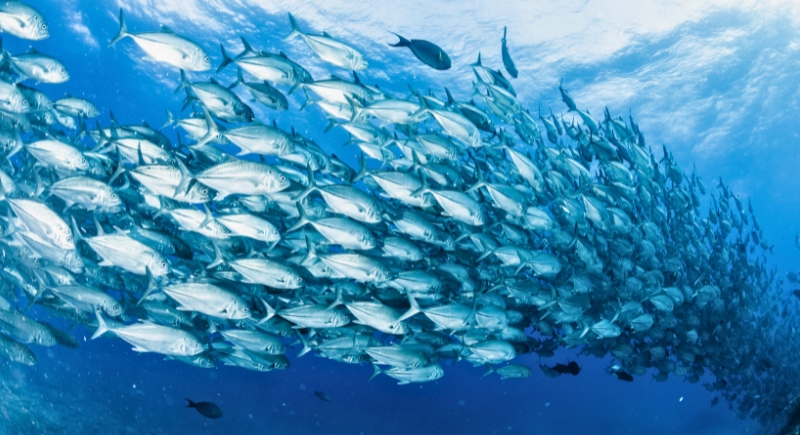The Biological Reason Tuna Can Never Stop Swimming
Tuna spend their lives in constant motion. The pace they keep feels almost unbelievable because nothing about the way they move is slow or simple. Most people think of tuna as an everyday food, yet the animals themselves follow rules that hardly match that image. Their bodies are built to stay in motion, and that design comes with a single biological fact that shapes everything about how they survive.
Built For Motion

Image via Wikimedia Commons/Takashi Hososhima
Tuna belong to a group called Thunnini, and everything about this tribe supports one job: nonstop movement. Their bodies taper into a hydrodynamic bullet with retracted fins that lock into grooves when they race through the water. Even their eyes flatten into a smooth contour at high speed. Some species hit speeds around 50 miles per hour, and even a relaxed pace means covering their own body length every second.
This design isn’t just athletic flair. It supports a respiratory system that depends on motion. Tuna feed oxygen over their gills by moving forward with their mouths open, a method called ram ventilation. Water has to flow in one direction at a high enough rate to keep them fueled. If the movement slows too much, their oxygen intake collapses.
High-Oxygen Engines
Tuna gills process far more oxygen than most fish, and this fuels muscle bundles packed with red, oxygen-burning fibers. They rely on these deep core muscles to maintain powerful tail beats with almost no wasted motion. This setup supports sustained travel across entire oceans. Scientists have tracked Pacific bluefin traveling more than 10K miles in only five months, a marathon route most ships would struggle to match at the same pace.
The constant work generates serious heat, which creates another biological twist. Tuna maintain elevated muscle, eye, and brain temperatures through a network of blood vessels known as the rete mirabile. Members of the Thunnus genus can even warm their stomachs to improve digestion after eating cold prey. That makes them warm-blooded, a rare trait among bony fish. This expanded temperature range lets them roam between tropical shallows and cold northern waters without shutting down.
The Cost Of Staying Alive

Image via iStockphoto/EyeEm Mobile GmbH
All that heat and speed demand fuel, and tuna eat heavily to cover it. Some species consume up to 25 percent of their body weight in food each day. They take down squids, crustaceans, and plenty of fast-moving fish, often working in coordinated groups that attack bait balls with impressive efficiency. Their senses match the job, with sharp hearing, strong chemical detection, and vision that rivals top predators on land.
Their stamina still comes with a catch. Tuna muscle is denser than seawater, and the lift that keeps them suspended relies on forward motion. If they stop, they sink. The same motion that delivers oxygen also offsets their weight. The two needs lock together and form the rule that governs their survival.
Stopping Isn’t An Option
The simple truth is sharper than any myth: a tuna must swim to breathe, and it must breathe to swim. That loop never breaks. Motion pulls oxygen through their gills. Oxygen powers the muscles that beat their tail. The tail keeps them moving, so the water keeps flowing. Take away movement, and both systems crash at once. It’s a life lived in continuous forward gear, built around a rule the ocean never lets them forget.